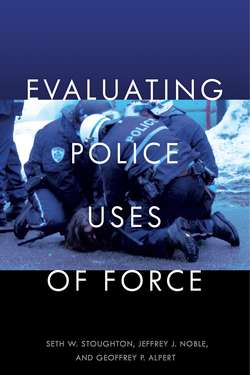Читать книгу Evaluating Police Uses of Force - Seth W. Stoughton - Страница 28
На сайте Литреса книга снята с продажи.
The Proportionality of Deadly Force
ОглавлениеThe clearest application of proportionality comes from the 1985 Supreme Court case Tennessee v. Garner.65 In that case, the Court articulated the circumstances under which officers could constitutionally use deadly force, concluding that the Fourth Amendment permits it when officers have “probable cause to believe that the suspect poses a significant threat of death or serious physical injury to the officer or others.”66 The Court explained that merely having sufficient legal justification to believe that an individual committed a crime, even a felony, did not automatically justify the use of lethal force to prevent the subject’s escape:
[N]otwithstanding probable cause to seize a suspect, an officer may not always do so by killing him. The intrusiveness of a seizure by means of deadly force is unmatched. The suspect’s fundamental interest in his own life need not be elaborated upon. The use of deadly force also frustrates the interest of the individual, and of society, in judicial determination of guilt and punishment. Against these interests are ranged governmental interests in effective law enforcement. . . .
Without in any way disparaging the importance of these goals, we are not convinced that the use of deadly force is a sufficiently productive means of accomplishing them to justify the killing of nonviolent suspects. The use of deadly force is a self-defeating way of apprehending a suspect and so setting the criminal justice mechanism in motion. If successful, it guarantees that that mechanism will not be set in motion. And while the meaningful threat of deadly force might be thought to lead to the arrest of more live suspects by discouraging escape attempts, the presently available evidence does not support this thesis. . . .
Where the officer has probable cause to believe that the suspect poses a threat of serious physical harm, either to the officer or to others, it is not constitutionally unreasonable to prevent escape by using deadly force. Thus, if the suspect threatens the officer with a weapon or there is probable cause to believe that he has committed a crime involving the infliction or threatened infliction of serious physical harm, deadly force may be used if necessary to prevent escape, and if, where feasible, some warning has been given.67
In the aftermath of Garner, the rule governing deadly force appeared fairly straightforward: deadly force was a proportional response to a significant threat of death or great bodily harm, and was a disproportionate response to any lesser threat.
That straightforward reading was complicated in 2007, when the Court decided Scott v. Harris.68 In that case, the Court reimagined the Garner holding, writing, “Garner did not establish a magical on/off switch that triggers rigid preconditions whenever an officer’s actions constitute ‘deadly force.’ Garner was simply an application of the Fourth Amendment’s ‘reasonableness’ test, to the use of a particular type of force in a particular situation.” Instead of setting out the circumstances in which deadly force is constitutionally permissible, which is how Garner had been interpreted up until 2007, the Harris Court understood Garner to be an example of Graham’s reasonableness test. This represented a rather tortured rewriting of Garner—the Harris Court was interpreting the Garner opinion, written in 1985, to apply a standard that would not be articulated until Graham was decided in 1989—but holes in the space-time continuum aside, Harris suggests that, for purposes of proportionality, there is no meaningful difference between deadly force and less-lethal force: “all that matters is whether [the officer’s] actions were reasonable.”69
This suggestion is called into question, at least to some degree, by the fact that Scott v. Harris itself appears to have followed the Garner rule. In Harris, an officer used his vehicle to ram a fleeing motorist, causing the fleeing vehicle to go into an uncontrolled spin and crash. The Court described the events leading up to the ram as “a dangerous high-speed car chase that threaten[ed] the lives of innocent bystanders.” Indeed, the Court held that the fleeing motorist “posed a substantial and immediate risk of serious physical injury to others.”70 A simple application of the Garner rule to the facts as the Court understood them leads inevitably to the conclusion that the use of deadly force in that case was proportional.
After Harris, it is clear that deadly force is proportional when officers are confronted with a significant threat of death or serious bodily injury. What is unclear, at least at this point, is whether deadly force may be constitutionally proportional in other circumstances as well. Although Garner and Harris both represent useful touchstones in evaluating the constitutionality of deadly force, evaluators are cautioned that proportionality assessment in any context requires an extensive review of the pertinent facts and circumstances, including the factors laid out in Graham.
